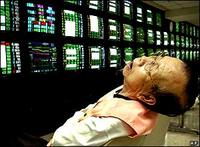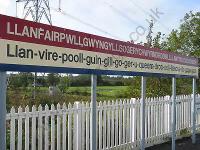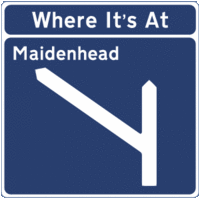
The Republic of Poland is a country located in Central Europe, between Germany to the west, the Czech Republic and Slovakia to the south, Ukraine and Belarus to the east, and the Baltic Sea, Lithuania and Russia (in the form of the Kaliningrad Oblast exclave) to the north.
The Polish state was formed over 1,000 years ago under the Piast dynasty, and reached its Golden Age near the end of the 16th century under the Jagiellonian dynasty, when Poland was one of the richest and most powerful countries in Europe. On May 3, 1791 the Sejm of the Commonwealth of Poland-Lithuania voted for the May Constitution of Poland, Europe's first written constitution, and the second in the world after the Constitution of the United States. Soon afterwards, the country ceased to exist after being partitioned by its neighbours Russia, Austria and Prussia. It regained independence in 1918 in the aftermath of the First World War as the Second Polish Republic. Following the Second World War it became a communist satellite state of the Soviet Union known as the People's Republic of Poland. In 1989 the first partially-free elections in Poland's post-World War II history concluded the Solidarity movement's struggle for freedom and resulted in the defeat of Poland's communist rulers. The current Third Polish Republic was established, followed a few years later by drafting a new constitution in 1997. In 1999 Poland became a part of NATO and in 2004 it joined the European Union.
Poland's official name in Polish is Rzeczpospolita Polska. The names of the country, Polska, and of the nationality, the Poles, are of Slavic origin. Their name may derive from the tribal name Goplanie - people living around Lake Gopło - the cradle of Poland mentioned as Glopeani having 400 strongholds circa 845 (Bavarian Geographer). Common opinion holds that the name Polska comes from the Slavic Polanie tribe who established the Polish state in the 10th century (Greater Poland). The conventional etymology of the ethnic name of the Poles relates it to these Polish Polanie, "dwellers of the field"; pol, "field", analogous to Russian polyî, "open land", from Indo-European pelè-, "flat" + -anie, "inhabitants", analogous to Latin -anus, "originating from" (please compare Yuriev-Polsky). In old Latin chronicles the terms terra Poloniae (land of Poland) or Regnum Poloniae (kingdom of Poland) appear.
Parallel to this terminology, another one, Lechia, came into use, thought to derive from the tribe name Lędzianie. It gave rise to an alternative name for "Pole": Lęch, Lęchowie in Old Church Slavonic, Lechia, Lechites in Latin, Lach in Ruthenian, Lyakh in Russian, as well as to old German Lechien, Hungarian Lengyelorszag, Lengyel, Lithuanian Lenkija, lenkas and Turkish Lechistan (from Persian Lehestan.)
HistoryThe Polish nation began to form into a recognisable unitary territorial entity around the middle of the 10th century under the Piast dynasty. In the 12th century Poland fragmented into several smaller states, which were later ravaged by the Mongol armies of the Golden Horde in 1241. Under the Jagiellon dynasty, Poland forged an alliance with its neighbour Lithuania. A golden age occurred in the 16th century during its union (Lublin Union) with Lithuania in the Polish-Lithuanian Commonwealth. The citizens of Poland took pride in their ancient freedoms and parliamentary system, though the Szlachta monopolised most of the benefits. Since that time Poles have regarded freedom as their most important value. Poles often call themselves the nation of the free people.
The Polish-Lithuanian Commonwealth at its greatest extentIn mid-17th century Swedish invasion rolled through the country in the turbulent time known as "The Deluge" (potop). Numerous wars against the Ottoman Empire, Russia, Cossacks, Transylvania and Brandenburg-Prussia ultimately came to an end in 1699. During the following 80 years, the waning of the central government and deadlock of the institutions weakened the nation, leading to half-anarchy and growing dependency on Russia, as in original Polish Democracy every member of parliament was able to break any work or project by shouting 'Liberum Veto' during the session, and there was no need to be a genius for Russian tsar to offer money to the traitors, who kept their country safe from reforms and new solutions.
The Enlightenment in Poland fostered a growing national movement to repair the state, resulting in the first written constitution in Europe, in 1791 (May Constitution of Poland). The process of reforms ceased with the partitions of Poland between Russia, Prussia, and Austria in 1772, 1793 and 1795 which ultimately dissolved the country. Poles resented their shrinking freedoms and several times rebelled against their oppressors ( see List of Polish Uprisings).
After the Napoleonic wars a reconstituted Polish state, the Duchy of Warsaw, ruled by the Russian tsar as a Congress Kingdom, and possessed a liberal constitution. However, the Russian tsars soon reduced Polish freedoms and Russia eventually de facto annexed the country. Later in the 19th century, Austrian-ruled Galicia became the oasis of Polish freedom.
During World War I all the Allies agreed on the restitution of Poland that United States President Woodrow Wilson proclaimed in point 13 of his Fourteen Points. Shortly after the surrender of Germany in November 1918, Poland regained its independence as the Second Polish Republic. A new threat, Soviet aggression, arose in the 1919 (Polish-Soviet War), but Poland succeeded in defending its independence.
Poland between 1921 and 1939
The Second Polish Republic lasted until the start of World War II when Germany and the Soviet Union invaded and split the Polish territory between them from (September 28, 1939). Poland suffered greatly in this period (see General Government). Of all the countries involved in the war, Poland lost the highest percentage of its citizens: over 6 million perished, half of them Polish Jews. Poland's borders shifted westwards; pushing the eastern border to the Curzon line and the western border to the Oder-Neisse line. After the shift Poland emerged smaller by 76 000 km² or by 20% of its pre-war size. The shifting of borders also involved the migration of millions of people – Poles, Germans, Ukrainians, Jews. Eventually, Poland became, for the first time in history, an ethnically unified country.
The Soviet Union brought a new communist government to Poland, analogous to much of the rest of the Eastern Bloc. In 1948 a turn towards Stalinism brought in the beginning of the next period of totalitarian rule. The People's Republic of Poland was officially proclaimed in 1952. In 1956 the régime became more liberal, freeing many people from prison and expanding some personal freedoms. Labour turmoil in 1980 led to the formation of the independent trade union, "Solidarity", which over time became a political force. It eroded the dominance of the Communist Party; by 1989 it had triumphed in parliamentary elections, and Lech Wałęsa, a Solidarity candidate, eventually won the presidency in 1990.
A shock therapy programme during the early 1990s enabled the country to transform its economy into one of the most robust in Central Europe. Despite a regression in social and economic standards, there were numerous improvements in other human rights (free speech, functioning democracy and the like). Poland was the first post-communist country to regain pre-1989 GDP levels. Poland joined the NATO alliance in 1999. Then Polish voters said yes to the EU in a referendum in June 2003. Poland joined the European Union on 1 May 2004.
PoliticsPoland is a democratic republic. Its current constitution dates from 1997. The government structure centres on the Council of Ministers, led by a prime minister. The president appoints the cabinet according to the proposals of the prime minister, typically from the majority coalition in the bicameral legislature's lower house (the Sejm). The president, elected by popular vote every five years, serves as the head of state. The current president is Aleksander Kwaśniewski.
Polish voters elect a two house parliament (National Assembly, Polish Zgromadzenie Narodowe), consisting of a 460 member lower house Sejm and a 100 member Senate (Senat). The Sejm is elected under a proportional representation electoral system similar to that used in other parliamentary political systems while the Senate is elected under a comparatively rare first past the post bloc voting. With the exception of ethnic minority parties, only political parties receiving at least 5% of the total national vote can enter Sejm.
The judicial branch plays a minor role in decision-making. Its major institutions include the Supreme Court (Sąd Najwyższy) (judges appointed by the president of the republic on the recommendation of the National Council of the Judiciary for an indefinite period), and the Constitutional Tribunal (Trybunał Konstytucyjny) (judges chosen by the Sejm for nine-year terms). The Sejm (on approval of the Polish Senate) appoints the Ombudsman or the Commissioner for Civil Rights Protection (Rzecznik Praw Obywatelskich) for a five-year term. The Ombudsman has the duty of guarding the observance and implementation of the rights and liberties of the human being and of the citizen, the law and principles of community life and social justice.
GeographyThe Polish landscape consists almost entirely of the lowlands of the North European Plain, at an average height of 173 metres, though the Sudetes (including the Karkonosze) and the Carpathian Mountains (including the Tatra mountains, where one also finds Poland's highest point, Rysy, at 2,499 m.) form the southern border. Several large rivers cross the plains; for instance, the Vistula (Wisła), Oder (Odra), Warta the (Western) Bug. Poland also contains over 9,300 lakes, predominantly in the north of the country. Masuria (Mazury) forms the largest and most-visited lake district in Poland. Remains of the ancient forests survive: see list of forests in Poland. Poland enjoys a temperate climate, with cold, cloudy, moderately severe winters and mild summers with frequent showers and thunder showers.
EconomySince its return to democracy, Poland has steadfastly pursued a policy of liberalising the economy and today stands out as one of the most successful and open examples of the transition from communism to a market economy.
Złoty, the nation's currency.The privatisation of small and medium state-owned companies and a liberal law on establishing new firms have allowed for the rapid development of an aggressive private sector, followed by a development of consumer rights organisations later on. Restructuring and privatisation of "sensitive sectors" (e.g., coal, steel, railways, and energy) has begun. The biggest privatisations so far were a sale of Telekomunikacja Polska, a national telecom to France Telecom (2000) and an issue of 30% shares of the biggest Polish bank, PKO BP, on the Polish stockmarket (2004).
Poland has a large agricultural sector of private farms, that could be a leading producer of food in the European Union now that Poland is a member. Challenges remain, especially under-investment. Structural reforms in health care, education, the pension system, and state administration have resulted in larger-than-expected fiscal pressures. Warsaw leads the region of Central Europe in foreign investment and allegedly needs a continued large inflow. GDP growth had been strong and steady from 1993 to 2000 with only a short slowdown from 2001 to 2002. The prospect of closer integration with the European Union has put the economy back on track, with growth of 3.7% annually in 2003, a rise from 1.4% annually in 2002. In 2004 GDP growth equalled 5.4% and in 2005, it is expected to be around 3.7%.
Annual growth rates broken down by quarters:
Q1 2003 - 2.2%
Q2 2003 - 3.8%
Q3 2003 - 3.9%
Q4 2003 - 4.7%
Q1 2004 - 6.9%
Q2 2004 - 6.1%
Q3 2004 - 4.8%
Q4 2004 - 3.9%
Although the Polish economy is currently undergoing an economic boom there are many challenges ahead. The most notable task on the horizon is the preparation of the economy (through continuing deep structural reforms) to allow Poland to meet the strict economic criteria for entry into the European Single Currency. There is much speculation as to just when Poland might be ready to join the Eurozone, although the best guess estimates put the entry date somewhere between 2009 and 2013. For now, Poland is preparing to make the Euro its official currency (as other countries of the European Union), and Złoty will eventually be abolished from the modern Polish economy. Since joining the European Union, many young Polish people have left their country to work in other EU countries, mainly to Ireland, attracted by the high standard of living and high wages, which they can then send back to their families in Poland.
TransportationPoland total length of railways in Poland is 23,420 km. The total length of highways/expressways is 364,657 km. There are a total of 9,283,000 registered passenger automobiles, as well as 1,762,000 registered trucks and buses (2000).
Poland has eight major airports, a total of 122 airports and airfields, as well as three heliports. The total length of navigable rivers and canals is 3,812 km. The merchant marine consists of 114 ships, with an additional 100 ships registered outside the country. The principal ports and harbours are Gdańsk, Gdynia, Kołobrzeg, Szczecin, Świnoujście, Ustka, Warsaw, and Wrocław.
 What was the name of the first roller coaster and who built it?
What was the name of the first roller coaster and who built it?




































 Add my feed to your Rss
Add my feed to your Rss
